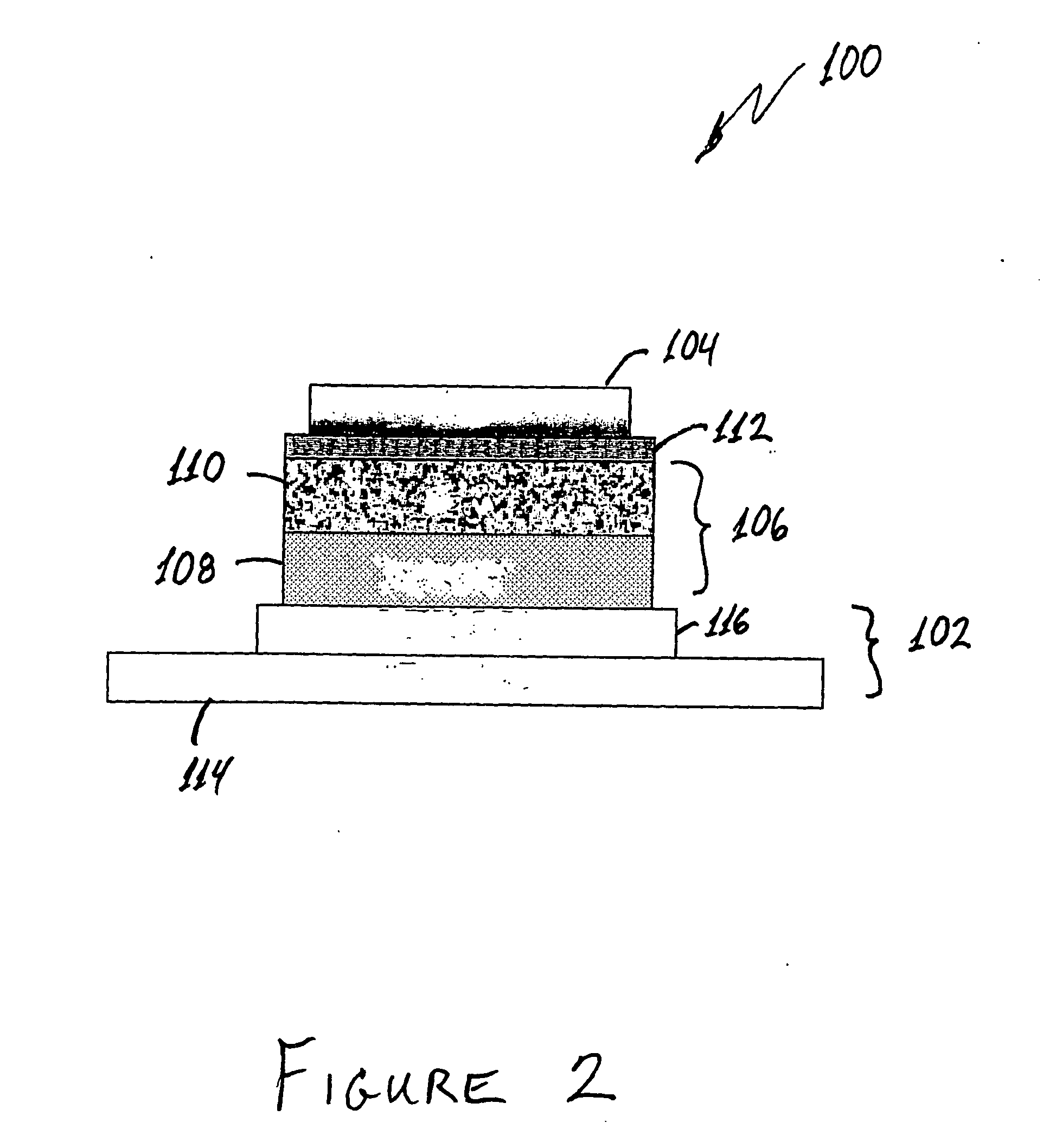Effective organic solar cells based on triplet materials
- Summary
- Abstract
- Description
- Claims
- Application Information
AI Technical Summary
Problems solved by technology
Method used
Image
Examples
example 1
[0033]PtOEP was selected for the electron donor material and C60 was used as the electron acceptor material in this example according to the current invention. In particular, 2,3,7,8,12,13,17,18-octaethyl-21H,23H-porphine platinum (II) (PtOEP) is one example of a triplet donor material that was found to be suitable for organic photovoltaic devices according to an embodiment of the current invention. Both of these triplet materials have strong triplet electron states, excellent thermal stabilities, and good abilities to form thin films. Unlike triplet materials adopted in phosphorescent OLEDs, where they are often used as dopants, neat PtOEP thin films were employed for photovoltaic heterojunctions in this embodiment because exciton diffusion ability and carrier mobility would be affected by energy trapping structures of doping thin films. 2,9-dimethyl-4,7-diphenyl-1,10-phenanthroline (BCP) served as the hole / exciton blocker between the C60 layer and the Al electrode. Indium-tin-oxid...
example 2
[0038]For an example of a polymer solar cell, we use commercially available poly(3-hexylthiophnene) (P3HT). The device structure is a sandwich structure consisting of an anode (ITO / PEDOT) and cathode (Ca / Al) having a polymer blend of P3HT and PCBM in between. The P3HT blend is spin-casted at a thickness of about 200 nm. The purchased P3HT has a significant amount of heavy metal nano-particles, originally from the catalyst during the synthesis, and the solar cells show an efficiency of about 4.5%. After purification, the heavy metal nano particles have been removed, and the devices show much lower efficiency, around 2% of conversion efficiency. The heavy metal particles can be metals which assist the formation of triplet excitons. It is believed that metal particles can be replaced by organic molecules shown as examples in FIG. 1.
[0039]Effective organic photovoltaic devices based on typical triplet material PtOEP have been demonstrated in an example of an embodiment of this invention...
PUM
| Property | Measurement | Unit |
|---|---|---|
| Responsivity | aaaaa | aaaaa |
| Wavelength | aaaaa | aaaaa |
| Triplet exciton | aaaaa | aaaaa |
Abstract
Description
Claims
Application Information
 Login to View More
Login to View More - R&D
- Intellectual Property
- Life Sciences
- Materials
- Tech Scout
- Unparalleled Data Quality
- Higher Quality Content
- 60% Fewer Hallucinations
Browse by: Latest US Patents, China's latest patents, Technical Efficacy Thesaurus, Application Domain, Technology Topic, Popular Technical Reports.
© 2025 PatSnap. All rights reserved.Legal|Privacy policy|Modern Slavery Act Transparency Statement|Sitemap|About US| Contact US: help@patsnap.com



